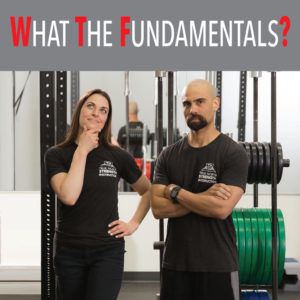Let’s talk about the pistol squat.
For those who aren’t aware of what it is based on the name, it’s that funky, single-leg squat variation where the individual doing the movement sticks one leg out in front and drops into a deep squat – butt touching their heel, heel firmly planted on the ground, and the other leg straight out in front. It’s one of the “IG Favourites” because it looks pretty cool, and for anyone that sees it and tries it… it’s pretty darn tough, too.
Now, the thing is, it’s also not exactly an essential variation – and there are a lot of factors that go into how quickly someone can move through the progressions to successfully complete it. But for everyone that’s just dying to try to add it into their movement toolbox (and post it on the ‘gram), here’s a possible progression that you can work your way through. It’s not the ONLY progression, but it’s a pretty solid one (if we do say so ourselves), especially since each level can be seen as a “gatekeeper” to the next one – in other words, don’t move onto the next movement until you can successfully complete the one you’re working on for solid reps.
First off – let’s learn to control our single-leg squat at a progressively deeper level. A good starting point for this would be the Single-Leg Squat to Box (or bench). What you want to do is find a box, a chair or a bench that is solid enough to support your weight if you sit on it (possibly dropping a little heavier than intended), and at a height that – while challenging – allows you to lower yourself on one leg into a squat, touch the box (chair, bench, etc), then come back up again – all without putting the other foot on the ground. At this level, you are learning to control the descent, keep your balance, and at the same time develop the strength to come back out of that single-leg squat.
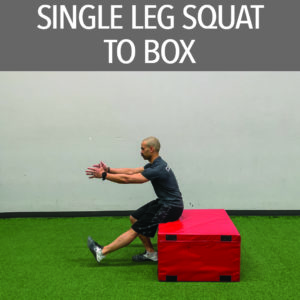
Now, before we move off this stage, I just need to take a moment to geek out and define a couple of terms relating to movement: concentric and eccentric. I’m going to try not to be too sciency because that’s never fun to read and this isn’t a textbook – but I’m also going to be simplifying these concepts quite a bit so if you’re a stickler for detail just go with the flow. The concentric portion of a movement is when the muscles are shortening, and the eccentric portion is when the muscles are lengthening. The reason it’s important to know this is because the eccentric step can sometimes be the more challenging part of a movement, and this is heightened when you try to do so under control and/or slowly. So with the Single-Leg Squat to Box, the eccentric part is when you are lowering yourself down to the box – and the concentric is standing back up.
The reason I went through that is that once you’ve mastered the Squat to Box, the next step focuses on the eccentric portion of the Pistol Squat – the Single-Leg Step Down. Using this exercise and focusing on the lowering part of a Step Up means that we can really start to work on achieving a greater depth than we could with the Squat to Box, and really challenge our hip stability while doing so. Start with a height that, while challenging, will allow you to successfully complete at least 50% of your target reps (5-8) – with success being measured by the ability to TOUCH the heel down without putting any weight on the lower foot. Be sure that you are keeping your weight on the entirety of the non-moving foot (the leg that’s doing all the work) – you don’t want to be rocking up onto the ball of the foot and losing contact with that heel, as you’ll shift work from the glute and hamstring onto the quad rather than having them share the workload. The goal of this stage – and thus, the reason you may have to stay here for a long time – is to get as low as needed to do the Pistol on the working leg… which means your butt must basically hit that heel.
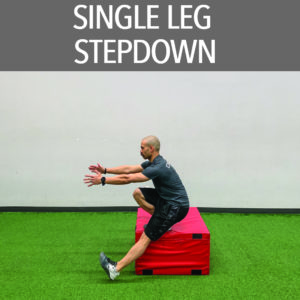
NOTE: if you are having knee or hip pain as you start to increase your depth, you should definitely check with your physio to make sure there aren’t some other structural issues that need to be addressed before moving on.
Success on that last stage? Awesome – ready to move on. This is the stage where things begin to deviate between individuals, depending on what the biggest obstacle to completing the Pistol Squat might be. For our purposes here, I’m going to assume that you have the strength in your hip flexors to hold the non-working leg out front (and not touch the ground as you lower yourself), but maybe you just don’t have the ankle mobility to drop that low. If this is the case, then start working on the Heel Elevated Pistol Squat. If you have one of the fancy, “made-for-this” angled platforms, that’s great – but if not, a board or weight plate will work just fine. Plant the working leg with the heel raised on your platform, stick that other leg out in front, and lower yourself (with control) as deep as you can. Work towards getting the full range of motion on the squat for the 2-4 reps, then lower the height of the heel lift. Rinse, repeat, and keep going until the heel of the working leg stays on the ground without a lift – and voila! You’re doing the Pistol Squat.
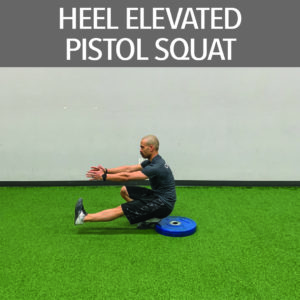
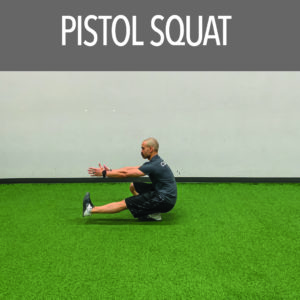
Have fun with this but remember not everyone will be able to do it, as genetics and past injuries override work ethic and desire. Be honest with yourself – and don’t move onto the next level if you have pain or simply can’t complete the requisite reps successfully. If that’s the case – that’s all right! Those first two stages are awesome exercises and will pay endless dividends to your strength and fitness in the long term.
As always – train hard, but train smart!


